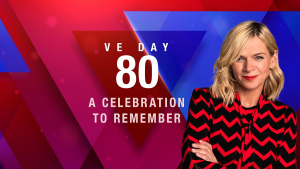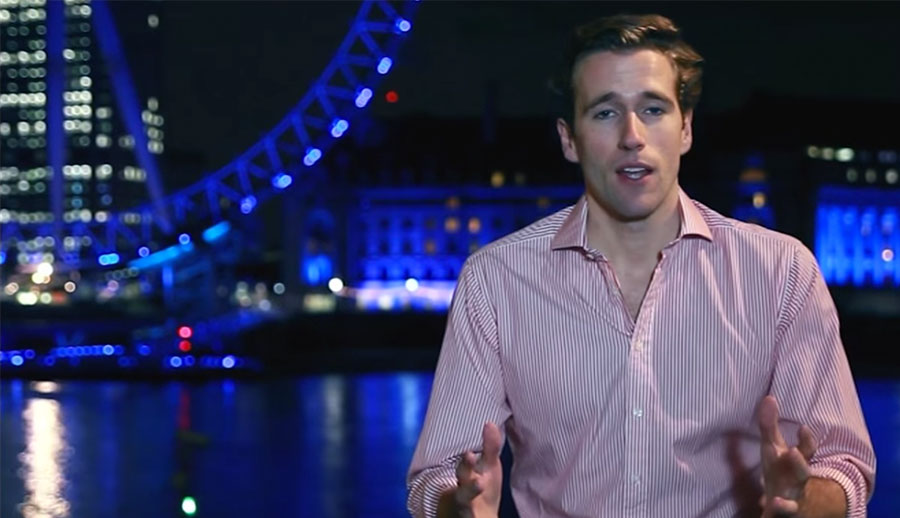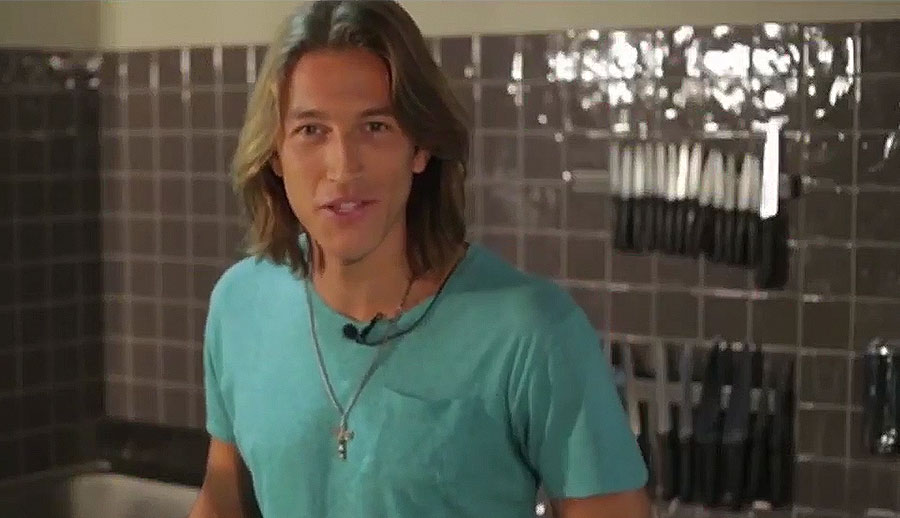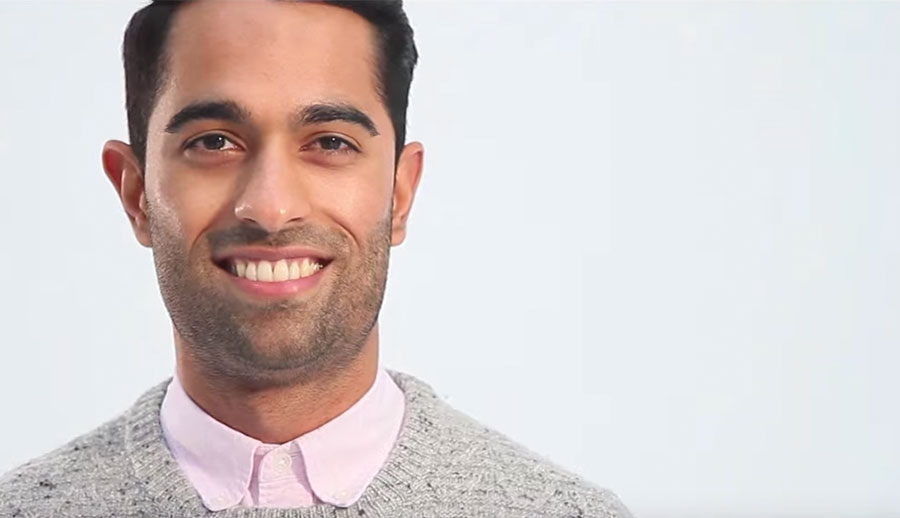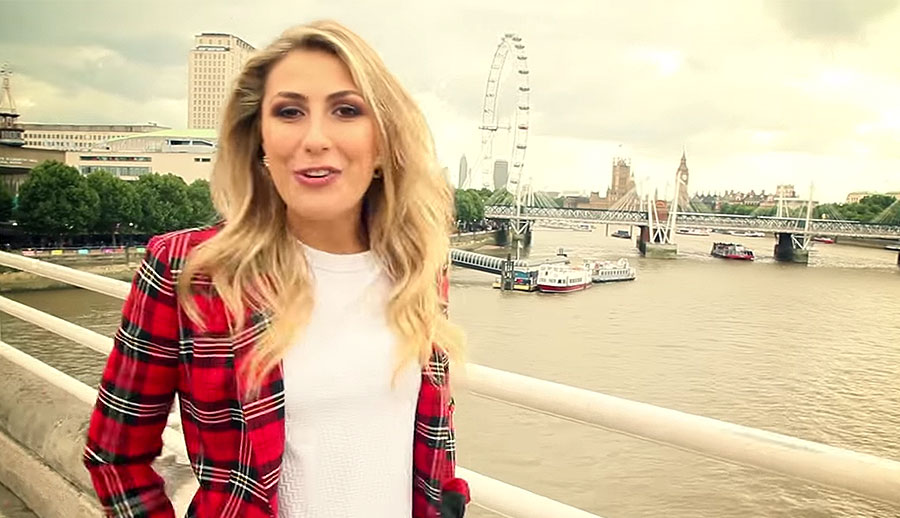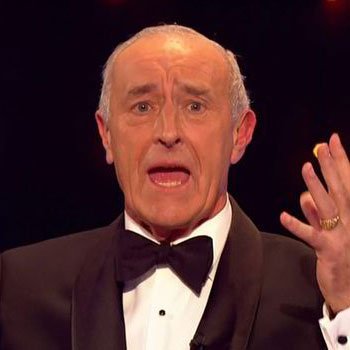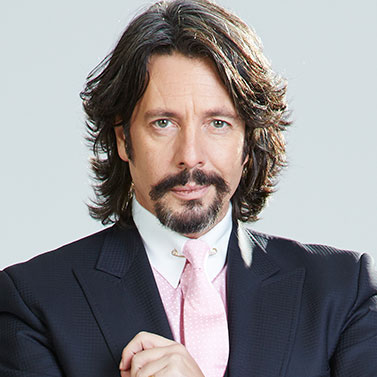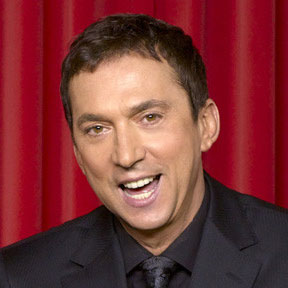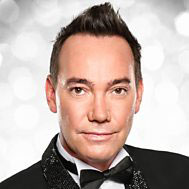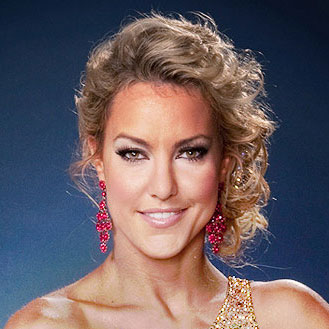-
.
-
Award-Winning Fast Track Programme
- The Original - voted the UK’s Best Presenter Course.
- Your ONLY opportunity to work with BAFTA, NTA winning Executive TV Producers and BBC Talent Executives - BBC/ITV/Channel 4/Channel 5//CBBC/BBC NEWS/SKY1 etc.
- NO EXPERIENCE REQUIRED – we kind of prefer it that way!
- Tailor-made training for each client - max 4 clients.
- Perfect for aspiring presenters, influencers and business people to maximise your presenting skills.
- Incredible Success Rate & 5 Star Reviews. The ONLY course endorsed by TV agents, TV companies and TV Channels.
- Clients win a place on our Talent Database - we put you up for our exclusive presenter jobs and amazing industry opportunities.
Why We're Voted The Best
Gareth Davies
The Importance of What You Wear – Presentation Skills Course
When it comes to delivering a powerful presentation, most people focus on the words they say and the slides they show. But there’s another crucial element that can dramatically impact your audience's perception of you: what you wear. At The Presenter Studio, we understand that presentation skills go beyond just speaking – they involve how you present yourself as a whole. That’s why we emphasise appearance as part of our comprehensive presentation skills course.
Clothing is a powerful tool for communication. Before you even say a word, your audience has already formed an impression based on how you look. Whether you’re presenting in a corporate boardroom, on a stage, or in front of a camera, your outfit contributes to your credibility, confidence, and clarity. The way you dress should reflect your message, your brand, and your audience.
In our presentation skills course, we work with professionals to not only improve their content and delivery but also to align their visual presence with their communication goals. What you wear can help reinforce your message. A structured, polished outfit can signal authority and preparedness, while a more relaxed style may help convey approachability and creativity. It’s about understanding the context of your presentation and choosing an outfit that enhances, rather than distracts from, your performance.
Another reason clothing matters is because of how it affects your mindset. Wearing the right outfit can boost your confidence and help you step into the role of an expert or leader. When you feel good in what you’re wearing, you’re more likely to deliver your message with impact and authenticity. During our training sessions, we guide clients through how to use this to their advantage, transforming nervous energy into confident presence.
Many of our clients come to us looking for practical, actionable advice they can apply immediately. One of the simplest changes you can make is to be more intentional with your wardrobe. A carefully chosen outfit can enhance your non-verbal communication and help your audience connect with you more effectively. We see time and time again how small adjustments to appearance can lead to significant improvements in presentation delivery.
A presentation skills course should cover all aspects of presenting – from what you say, how you say it, to how you look while saying it. That’s what makes our approach at The Presenter Studio different. We tailor our training to the individual, ensuring that every presenter leaves with a holistic understanding of how to deliver high-impact, professional presentations.
To learn more and take your presenting to the next level, explore our full presentation skills course at:
https://www.presenterstudio.com/business-presenter-training/presentation-skills-training
The Next Big CBBC Presenter? We Think So!
We are hugely proud of this presenter showreel at The Presenter Studio.
Kai first came on our one day how to make it as a TV presenter workshop and we thought he was great…he's naturally funny warm and friendly and basically a TV producer's dream.
So we chatted to Kai about coming on our one to one advanced programme which includes a meeting where we discuss you come up with a strategy and a plan of attack for your career and then we go away and write bespoke scripts and come up with a schedule for a filming day.
We filmed with Kai all across London in South London central London in some really great locations, showcasing his fun quirky quick witted comedic style but at the same time keeping it warm and friendly.
We've branded and marketed him for kids TV we really think he could do incredibly well. He feels like the next wave of those great BBC presenters and we're excited for his future.
So please check out the showreel that we did for him https://youtu.be/SNax-vDjsU4 and please comment and share below.
BBC Events - VE Day Concert Review - A Masterclass in Presenting
Did you catch the VE Day concert on BBC1 last night?
We loved it for so many reasons.
It was what the BBC do best. Quality live programming with heart.
It was paced beautifully - coming out of the BBC Events team, it didn't have the bang and wallop of an entertainment commission. Instead it felt like a warm nostalgic and respectful reminder of a time we must all learn about.
The VT's were glorious. Short vignettes offering personal stories of what time was like back then.
And it was all held together gloriously by the wonderful Zoe Ball. She seemed a little nervous at the start. A gentle reminder that nerves can be a positive thing - they show respect, warmth and humanity - the perfect tone and feel for the evenings event. It wasn't about the host - it was about the stories of the heros. And Zoe did the perfect job in setting that tone.
Congrats BBC Studios BBC for a truly wonderful night of TV.
#bbcevents #veday #livetv #broacast #presenter
Presentation Skills - 3 Top Tips
So I saw two presentations this week and I wanted to share my thoughts on both...as I think there are lots of helpful learnings here and lots of tips to share from us at The Presenter Studio.
1 When it comes to your presentations make sure they reflect the tone the feel of the brand that you're representing. We were lucky enough to hear from the team at wework which for me is an innovative energetic and young working space so therefore you'd expect the presentation to feel young and energetic.
2 Get your presentations off to a pacey dynamic start. If the opening of your presentation drugs lacks focus lacks engagement the audience quickly decides to be more passive in the session and not active in their listening first impressions really do count on many level.
And 3 – Slides! It's so surprising how many presenters rely so heavily on slides yet they can really feel old fashioned they can pull the focus and often visually they don't reflect the brand that you are representing. So if you are going to use slides ask yourself why do I need them do they reflect the visual nature of our brand and never present to the slide always present to the audience.
Hope these tips and tricks help!
#presentationskills #presentations #presentercoach #presenter
Why Personality Is the Most Underrated Presentation Skill
When it comes to presentation skills, one of the most common mistakes we see is people slipping into what we call “presenter mode.” It’s that moment where you start planning your talk and suddenly find yourself using corporate language you’d never normally say. You become formal, stiff, and oddly robotic. You forget who you are. And in doing so, you forget the very thing that makes a presentation work: your personality.
At The Presenter Studio, we always say people buy people. It’s so simple, yet so many of us forget this the moment we’re in front of a room or camera. We focus so hard on being professional that we forget to be personal. But the best presenters — the ones people remember, trust, and want to hear from again — are always the ones who bring themselves into the room.
Adding personality doesn’t mean being over-the-top or trying to be funny. It means being you. Speaking in your own voice. Sharing your perspective. Showing some warmth, humour, or vulnerability where it’s appropriate. It’s about having a conversation with your audience, not talking at them.
And here’s the key — audiences don’t want perfect. They want real. They want energy, insight, and human connection. When you show personality, you build trust. You make your ideas stick. You turn a presentation into an experience.
So how do you bring more personality into your presentations?
Start by writing the way you speak.
Don’t write a script full of jargon or corporate phrases you’d never say out loud. Think about how you’d explain your topic to a friend or colleague. Use natural language. Add in questions, pauses, even asides — anything that makes it feel more like a conversation.
Share something personal.
This doesn’t mean telling your life story, but a relevant anecdote or insight from your own experience can go a long way. It helps people connect with you. It shows you care. And it makes your talk far more engaging than just reading off stats or slides.
Find your style.
You don’t need to mimic other speakers or copy someone else’s tone. Some people are calm and measured. Others are bold and energetic. The best style is the one that feels right for you — and one that’s authentic to the brand you’re representing. Let your personality guide the tone, pace, and language of your delivery.
Practise sounding like you.
When you rehearse, listen back to how you sound. Are you stiff? Over-rehearsed? Or does it feel like you’re genuinely connecting with the audience? Practise until you find the rhythm that feels natural and personal. Confidence grows when you’re being yourself, not performing someone else’s idea of what a “good presenter” should sound like.
Your personality is your superpower. And in today’s noisy, content-heavy world, it’s often the difference between a presentation that’s forgotten and one that really lands.
So next time you prepare a talk, challenge yourself to strip away the unnecessary polish. Be clear. Be conversational. Be real. Because when you’re truly yourself, your audience will listen — and they’ll come back wanting more.
To learn how to present with confidence, clarity and personality, take a look at our bespoke training at
We’ll help you find your voice, own your style, and deliver presentations people want to show up for.
Media Training Courses: Why the Rule of Three Is Your Secret Weapon
One of the most powerful techniques we teach in our media training courses at The Presenter Studio is the Rule of Three. It’s simple, effective, and rooted in how people actually process information. Whether you’re preparing for a high-stakes TV interview, a podcast appearance, or a press panel, this tool helps you stay clear, focused, and in control.
This week, I was working with a client ahead of a big media appearance. They had so much to say — understandably — but the challenge was turning that wealth of knowledge into a message that would land. That’s where the Rule of Three came in.
The idea is straightforward. You start by identifying three key messages you want your audience to take away. These are your headline points — the big ideas that represent what you stand for, what matters to your brand, or what you want to influence.
Then, within each of those messages, you develop three sub-messages to support them. These might be examples, stats, anecdotes, or additional context that help bring your point to life.
Why is this so powerful? Because it gives your message structure. It creates a clear roadmap, not just for you as the speaker, but for your audience too. People are much more likely to remember what you’ve said when it’s grouped, repeated, and framed with clarity.
In the fast-paced, high-pressure world of media interviews, this kind of structure is a game-changer. It stops you from waffling. It keeps you on track. And it ensures that, even if the interview takes an unexpected turn, you always have a foundation to come back to.
But there’s more to it than just structure. The Rule of Three also helps refine your thinking. When you’re forced to distill your message into three clear ideas, you’re pushed to prioritise what matters most. It stops your content from becoming bloated or confusing. And in media, where time and attention are short, that clarity is crucial.
Audiences don’t remember everything — they remember what’s clear, consistent, and repeated. The Rule of Three taps directly into that.
So, the next time you’re preparing for a media appearance, ask yourself:
What are the three key things I want people to take away?
What are the three strongest supporting points or stories for each?
How can I repeat, reinforce, and stay centred on those ideas?
At The Presenter Studio, we’ve worked with CEOs, experts, celebrities, and entrepreneurs — and this method works across the board. It’s a framework that helps even the most nervous speaker feel prepared and confident. And it’s just one of the many tools we explore in our bespoke media training courses.
To find out more about how we can help you speak with clarity, authority, and personality in the media, visit: https://www.presenterstudio.com/business-presenter-training/media-training
If you’ve got something important to say, we’ll help you say it in a way that gets remembered.
Why Structure Is the Secret Weapon of Every Great Presentation
This week, I attended a presentation that really drove home one of the most common and costly mistakes we see at The Presenter Studio: a lack of structure. The speaker had interesting ideas and a clear passion for the subject, but they never quite got going. The talk drifted. There was no rhythm, no momentum, and no clear message. As an audience member, it was hard to stay engaged because we were all waiting for it to start making sense — and that moment never quite came.
When we work with clients, we always talk about structure being the backbone of a great presentation. It gives your content shape. It guides your audience through the story. And, crucially, it respects their time and attention.
One of the first things to think about is your opening. A lot of people take far too long to get started. They spend precious minutes introducing themselves, explaining what’s coming, or thanking people. But in today’s world, people want to get into the content quickly. If you think about any good TV show, it doesn’t meander at the top. It hooks you straight away. It draws you in with something interesting, then gets on with the story, the competition, or the drama.
Your presentation should do the same. A snappy, focused intro can set the tone and establish your authority. But it should be just that — a start, not the main event.
From there, your structure should take your audience on a clear journey. This might sound simple, but it’s something a lot of people forget. Without a roadmap, even the best content can feel confusing or disjointed. Structure creates flow. It helps people follow your ideas and understand how each part of your talk connects to the next.
It also helps you manage time. One of the biggest signs a presentation lacks structure is when it overruns or ends in a rush. Structure gives you natural time markers. It tells you when to move on, where your turning points are, and how to land a clear, memorable ending.
Another benefit of structure is that it allows you to lead rather than list. Presentations can easily become a series of bullet points or facts. But people don’t want information dumped on them. They want to be guided. Structure lets you build a case, tell a story, or deliver a message in a way that’s easy to absorb and enjoyable to follow.
So next time you’re preparing a presentation, ask yourself:
Am I starting strong?
Is there a clear flow to the content?
Does each section serve a purpose?
Am I keeping to time?
And most importantly — am I leading the audience through an experience?
If you’re unsure, it might be time to rethink how you structure your talk. Because when the structure is strong, everything else falls into place.
If you want help creating structured, confident, and compelling presentations, take a look at our presentation skills training. You’ll find more information at https://www.presenterstudio.com/business-presenter-training/presentation-skills-training.
Why It's Time to Rethink Your Slides in Public Speaking
This week I attended a public speech that left me reflecting on something we see time and time again at The Presenter Studio — our over-reliance on slides. The speaker came from a cool, young, innovative company. A brand that was clearly fresh, vibrant, and full of energy. Yet their presentation said otherwise.
Instead of connecting with the audience, the presenter hid behind a deck of tired, lifeless slides. They spoke more to the screen than to the room. The visuals felt dated and lacked any real sense of creativity or personality. It felt like a missed opportunity. And what was most disappointing is that this isn’t unusual. It’s become the norm.
Historically, we’ve all leaned on slides when it comes to public speaking. Somewhere along the line, they became a standard part of the format — something we include without even asking why. But that’s exactly the question we ask every client at The Presenter Studio to consider: Why are you using slides at all?
There’s a great tradition in copying what others do. We use slides because we’ve seen others do it. We fill them with bullet points because that’s what’s always been done. But just because something is familiar doesn’t mean it’s effective.
Every presentation should be unique. Just like you. Your talk should be tailored not only to your personality and communication style, but also to the brand you represent. If you're bold and modern, your slides should reflect that. If you're more understated and thoughtful, let that guide the tone of your visuals — or consider not using them at all. The most memorable presentations are often the ones that break away from convention.
At The Presenter Studio, we help people design talks that are truly personal. Sometimes that means using slides, and sometimes it means leaving them out entirely. The key is to make a conscious choice — not a default one.
What slides often do is act as a barrier. They can distance you from your audience and dilute your message. If they’re too text-heavy, people read instead of listen. If they’re poorly designed, they undermine your professionalism. If they’re overused, they turn what could be a dynamic experience into something forgettable.
The truth is, slides should support your story, not replace it. They should enhance your impact, not distract from it. So the next time you're preparing for a public speech, ask yourself: Do I really need these slides? What would happen if I used fewer? Or none at all?
Take a moment to think about what you’re really trying to say, how you want people to feel, and whether your slides are helping or hindering that goal. And remember the power of that old saying: less is more.
When you strip away what’s unnecessary, what you’re left with is you — your message, your voice, your energy. And that’s what audiences really remember.
Media Training - The importance of Eye Contact
Why Eye Contact Is the Game-Changer You’re Probably Overlooking
This week, I sat in on a presentation that reminded me of something so fundamental — yet so often overlooked — in both presenting and media interviews: eye contact.
The presenter had clearly put time into their slides. Their content was solid. But something felt off. And then it hit me — there was no real connection. They were looking above the audience, glancing at their notes, speaking into the space, but not to the people in the room.
It was a powerful reminder of just how important eye contact is — and why it’s something we work on so much in our media training sessions here at The Presenter Studio.
The Power of Eye Contact — More Than Just a Gaze
Eye contact isn’t just about where you’re looking. It’s about how you’re making people feel. And the benefits of getting it right go far beyond just ticking a box on your “body language” checklist.
Here’s what strong, intentional eye contact helps you achieve:
1. Warmth and Connection
At its core, communication is about connection. When you make eye contact with someone, even briefly, you signal: I see you. I value you.
In a presentation setting or during a media interview, this helps build a sense of trust and approachability. The audience feels included rather than talked at. It turns your delivery from a lecture into a conversation.
In our media training, we coach clients to look directly into the eyes of their interviewer, their camera lens, or key people in the audience. Why? Because it softens your tone, humanizes your message, and makes everything feel more genuine.
2. Pulling People In
Without eye contact, your audience can drift — and fast. We live in a world full of distractions, and if you’re not making the effort to draw people in visually, they’re more likely to tune out.
A well-timed look in someone’s direction can re-engage them. It invites them back into the moment. It says, this part is for you. That kind of personal connection is what elevates a good talk into a memorable one.
3. Showing That You Care
When you look at someone while speaking, it shows you care about whether they understand you. Whether they’re with you. Whether they matter.
Too often, people speak over others — especially in media interviews or panels — without ever making eye contact. It can come across as dismissive, cold, or worse, arrogant. Just a moment of eye contact can shift that impression completely.
At The Presenter Studio, we teach media spokespeople to use eye contact to project empathy, credibility, and emotional intelligence — the things that separate a forgettable soundbite from a powerful moment.
4. Reading the Room (Literally)
One of the most underrated benefits of good eye contact? It helps you read the room.
When you actually look at your audience, you can pick up nonverbal cues: Are they nodding? Smiling? Looking confused? All of this feedback helps you adjust your pace, energy, or tone in real time.
In media interviews, this is crucial — especially when you’re on camera. If your interviewer looks puzzled, that might be your cue to clarify. If they’re leaning in, you know you’ve landed something.
No script or teleprompter can replace the real-time feedback you get through eye contact.
5. Grounding Yourself
Ironically, one of the best ways to calm your nerves when presenting or being interviewed is to make eye contact.
It gives you something to focus on other than your own anxious thoughts. It reminds you that you’re talking to real people — not just “an audience.” And it often results in a more natural rhythm and tone, helping you sound more confident and relaxed.
Why We Make Eye Contact a Priority in Our Media Training
Eye contact might sound simple, but it’s a skill — and like any skill, it can be learned and strengthened. That’s why it’s one of the core areas we focus on in our media training courses.
Whether you’re preparing for a high-profile interview, a panel discussion, or a brand presentation, we help you:
- Find your natural eye contact rhythm (not too much, not too little)
- Work with cameras and screens (where “eye contact” means looking into a lens)
- Use eye contact to manage nerves and build presence
- Avoid the “scatter-gun” effect of trying to look at everyone at once
Eye contact is subtle — but its impact is huge.
Final Thoughts: Never Underestimate the Eyes
What I saw this week wasn’t a terrible presentation. But it lacked heart. It lacked that intangible quality that makes a speaker memorable. And more than anything, it lacked connection — all because of something as basic as where the speaker was looking.
If you want your message to land, your story to connect, and your audience to care, eye contact matters. It’s the thread that ties everything together.
And that’s why, at The Presenter Studio, it’s never just about what you say — it’s about how you make people feel when you say it.
Ready to Improve Your Presence and Impact?
If you want to communicate with more confidence, warmth, and connection, join one of our media training sessions. Whether you're preparing for live TV, a boardroom pitch, or a keynote speech, we’ll help you master the techniques that make all the difference — starting with something as simple (and powerful) as eye contact.
Contact us today: https://www.presenterstudio.com/business-presenter-training/media-training
The Presentation That Went Wrong - And Why It’s Worth Talking About
The Presentation That Went Wrong — And Why It’s Worth Talking About
Yesterday, I sat through a presentation that was a good reminder of the mistakes people make. We’ve all been there - hoping to be inspired or at least informed, but instead finding ourselves distracted, disengaged, and looking at the clock.
But as frustrating as those moments are, they also offer something incredibly valuable: perspective. It was a reminder of how quickly a presentation can go off track - and how easily the audience’s attention can slip away - when you forget the basics.
At The Presenter Studio, we always say the fundamentals are everything. No matter how great your content is, or how beautiful your slides look, without the three fundamentals - Passion, Eye Contact, and First Impressions - your presentation is going to fall flat.
Here’s what happened yesterday, and how it reaffirmed just why we focus on these three pillars in every presentation skills course we deliver.
1. Passion — Because People Feel More Than They Listen
From the first minute of the talk, it was clear something was missing. The speaker walked on stage and began reading directly from their phone - eyes down, voice monotone, no connection to the room. It felt like they were going through the motions, not sharing something they cared about.
That’s the problem with passion - or the lack of it. When a speaker isn’t engaged, it’s almost impossible for the audience to engage either. Passion isn’t just about volume or excitement - it’s about authenticity. It’s about showing your audience that this matters to you. That you believe in what you’re saying.
In our presentation skills course, we spend time helping people connect to their why. Why does this topic matter to you? What excites you about it? And more importantly - how do you communicate that excitement so your audience feels it too?
People want to be inspired, not just informed. If you’re passionate, they’ll be curious. If you’re not, they’ll tune out.
2. Eye Contact - The Easiest Way to Build Connection
Next came the second missed opportunity: eye contact.
Throughout the presentation, the speaker barely looked up. Eyes were glued to their screen. If they did glance at the audience, it was fleeting — just long enough to lose their place and return to their phone. And that, right there, is the moment you lose trust.
When you’re presenting, you’re not delivering a script - you’re having a conversation. And just like in any good conversation, eye contact is what builds trust, connection, and attention. Without it, your audience feels like you’re not really speaking to them - just speaking at them.
It’s one of the most common challenges we help people overcome in our presentation skills courses. Nervous presenters often avoid looking at the audience altogether - which is understandable. After all, it can be off-putting if people seem disinterested, or are checking their phones or taking notes.
But the truth is, eye contact is one of the fastest ways to pull people back in. Look at them - and they’ll look back. Engage them - and they’ll engage you.
We teach simple techniques for building natural, confident eye contact, so that your delivery feels more like a conversation than a performance.
3. First Impressions - Set the Tone or Risk Losing the Room
Finally, let’s talk about what might have been the biggest issue of all: the opening.
The presentation started late - almost 20 minutes behind schedule. No explanation, no sense of urgency. Just a slow trickle into a talk that lacked any kind of spark or direction. The energy was low. The pace was slow. The opening meandered without making a clear point.
And in those first five minutes, you could feel the audience switch off.
This is something we can’t stress enough: First impressions matter. A lot.
In our presentation skills course, we focus heavily on crafting strong openings - because we know how vital they are. Whether it’s a keynote speech, a boardroom pitch, or a virtual webinar, your opening is your first and best chance to hook your audience.
Start with a story. Ask a provocative question. Set the agenda with purpose and clarity. Show them why this is worth listening to.
When you don’t, you give people permission to disengage. They’ll check their phones. They’ll stop listening. And once you’ve lost them, it’s incredibly hard to win them back.
The Takeaway: Get the Basics Right, and the Rest Will Follow
It’s easy to overcomplicate public speaking. Fancy slides, big words, dramatic pauses - they all have their place. But without the fundamentals - Passion, Eye Contact, and First Impressions - none of it really works.
What I saw yesterday reminded me of why we do what we do at The Presenter Studio. Our presentation skills course is designed not just to teach you how to present, but how to truly connect with your audience, own the room, and feel confident doing it.
Whether you're a business leader, a creative professional, or someone who just wants to feel more confident speaking in front of others, the fundamentals are the same — and we can help you master them.
Want to Present Like a Pro?
If you’re ready to elevate your communication and presentation skills, join one of our presentation skills courses today. Whether it's online or in-person, private coaching or group training, we’ll help you find your voice, own your story, and deliver with impact.
Because when the basics are strong, everything changes.
For more information on our presentation skills courses visit: https://www.presenterstudio.com/business-presenter-training/presentation-skills-training
-
Watch Our Amazing Talent Taster Tapes
Talent Taster Tapes
We are the ONLY company to give you an industry recognised showreel.
That’s because we are the ONLY company to brand and market you for the genre of TV you are suited to.
In TV we call showreels 'Talent Taster Tapes' - and with us, that's what you'll get.
-
Optional Extras




